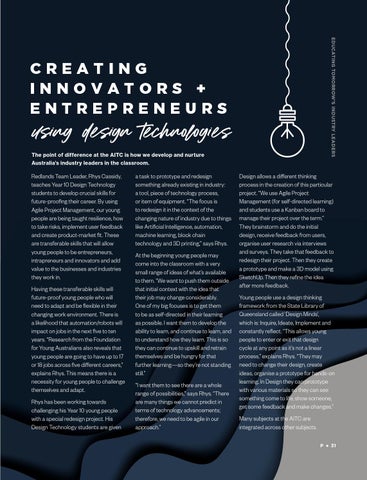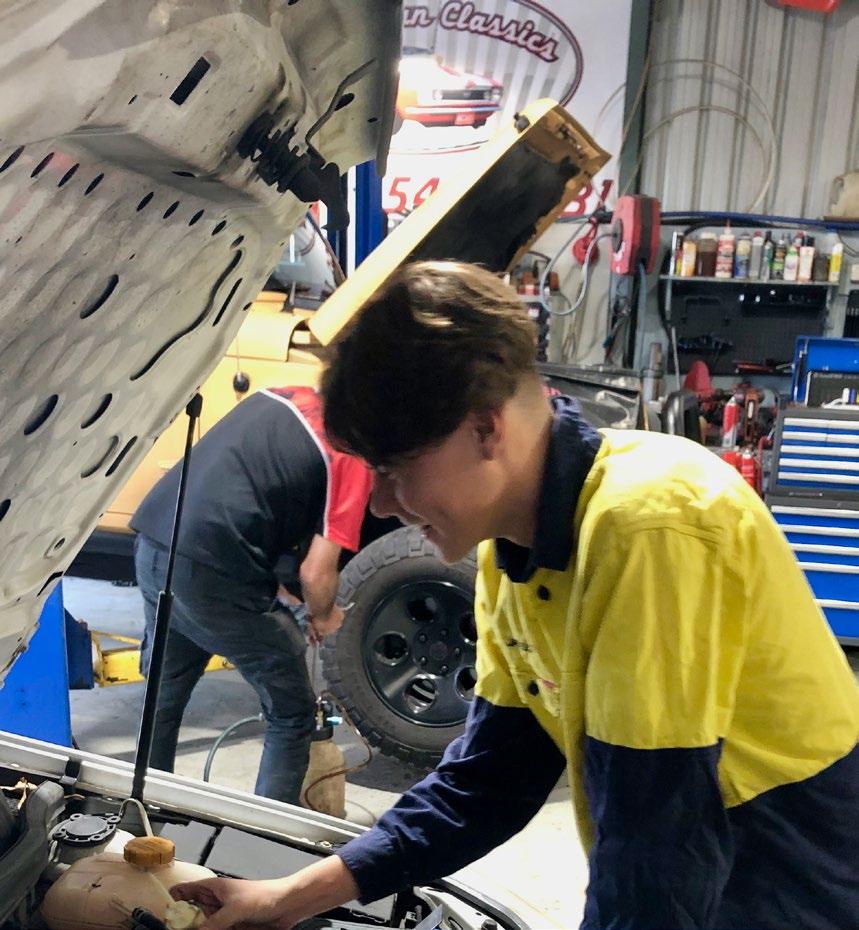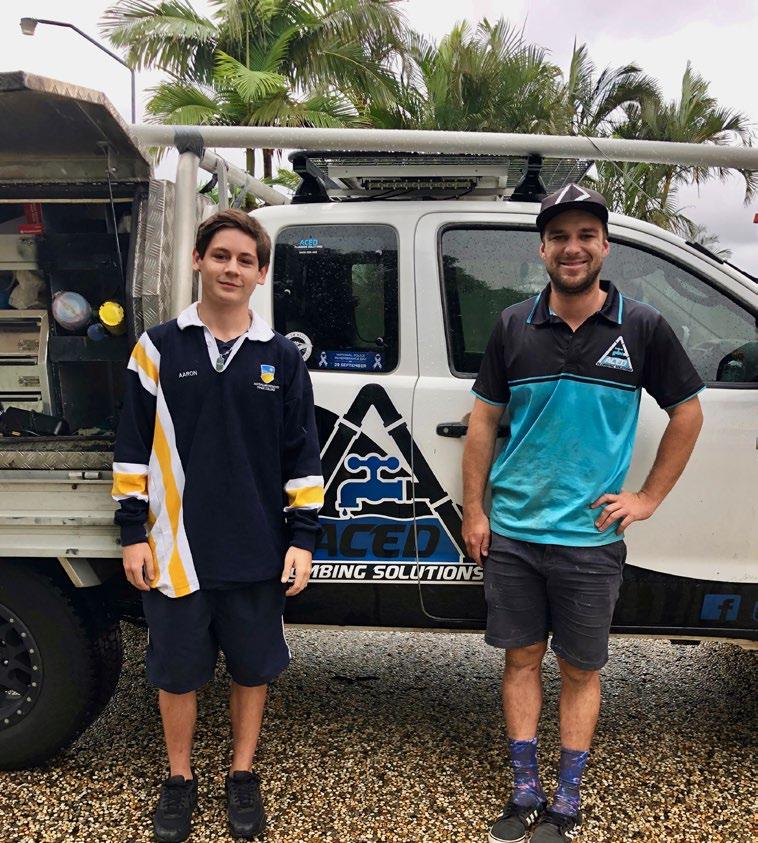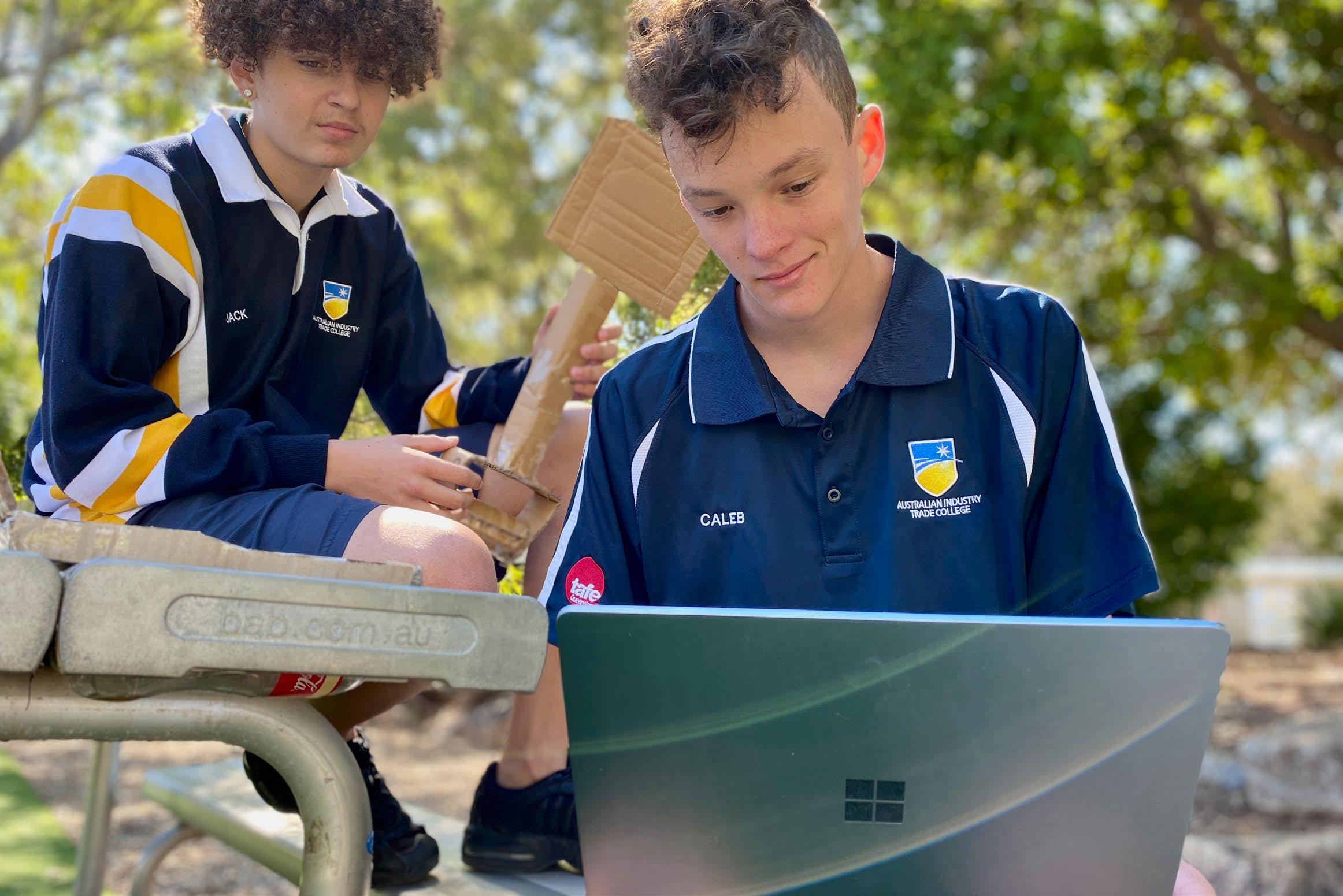EDUCATING TOMORROW’S INDUSTRY LEADERS
CREATING INNOVATORS + ENTREPRENEURS
using des ign technologies The point of difference at the AITC is how we develop and nurture Australia’s industry leaders in the classroom.
Redlands Team Leader, Rhys Cassidy, teaches Year 10 Design Technology students to develop crucial skills for future-proofing their career. By using Agile Project Management, our young people are being taught resilience, how to take risks, implement user feedback and create product-market fit. These are transferable skills that will allow young people to be entrepreneurs, intrapreneurs and innovators and add value to the businesses and industries they work in. Having these transferable skills will future-proof young people who will need to adapt and be flexible in their changing work environment. There is a likelihood that automation/robots will impact on jobs in the next five to ten years. “Research from the Foundation for Young Australians also reveals that young people are going to have up to 17 or 18 jobs across five different careers,” explains Rhys. This means there is a necessity for young people to challenge themselves and adapt. Rhys has been working towards challenging his Year 10 young people with a special redesign project. His Design Technology students are given
a task to prototype and redesign something already existing in industry: a tool, piece of technology process, or item of equipment. “The focus is to redesign it in the context of the changing nature of industry due to things like Artificial Intelligence, automation, machine learning, block chain technology and 3D printing,” says Rhys. At the beginning young people may come into the classroom with a very small range of ideas of what’s available to them. “We want to push them outside that initial context with the idea that their job may change considerably. One of my big focuses is to get them to be as self-directed in their learning as possible. I want them to develop the ability to learn, and continue to learn, and to understand how they learn. This is so they can continue to upskill and retrain themselves and be hungry for that further learning—so they’re not standing still.” “I want them to see there are a whole range of possibilities,” says Rhys. “There are many things we cannot predict in terms of technology advancements; therefore, we need to be agile in our approach.”
Design allows a different thinking process in the creation of this particular project. “We use Agile Project Management (for self-directed learning) and students use a Kanban board to manage their project over the term.” They brainstorm and do the initial design, receive feedback from users, organise user research via interviews and surveys. They take that feedback to redesign their project. Then they create a prototype and make a 3D model using SketchUp. Then they refine the idea after more feedback. Young people use a design thinking framework from the State Library of Queensland called ‘Design Minds’, which is: Inquire, Ideate, Implement and constantly reflect. “This allows young people to enter or exit that design cycle at any point as it’s not a linear process,” explains Rhys. “They may need to change their design, create ideas, organise a prototype for hands-on learning. In Design they can prototype with various materials so they can see something come to life, show someone, get some feedback and make changes.” Many subjects at the AITC are integrated across other subjects. P
31






